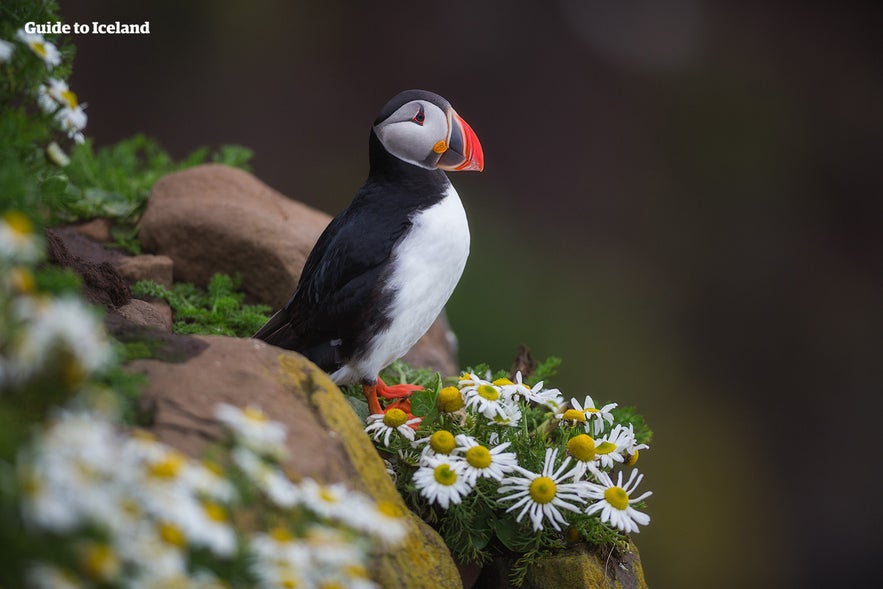Hornstrandir est une réserve naturelle située dans les Fjords de l'Ouest, au nord-ouest de l'Islande. Sa superficie totale couvre 580 kilomètres carrés de toundra, de falaises, de prairies fleuries et de glace.
Découvrez les merveilles de cette région en faisant une excursion dans les Fjords de l'Ouest. Cette magnifique région peut être visitée dans le cadre de ce road trip de 14 jours. Ceux qui louent une voiture et voyagent vers les Fjords de l'Ouest peuvent la découvrir lors de cette excursion à la journée.
Pourquoi vous pouvez faire confiance à notre contenu
Guide to Iceland est la plateforme de voyage la plus fiable en Islande, aidant des millions de visiteurs chaque année. Tous nos contenus sont rédigés et vérifiés par des experts locaux qui connaissent parfaitement l’Islande. Vous pouvez compter sur nous pour des conseils de voyage précis, à jour et fiables.
Le glacier Drangajokull se trouve au sud de la région.
La réserve naturelle a été créée en 1975. Ses frontières englobent les fjords pittoresques Hrafnfjordur et Furufjordur, et s’étendent jusqu’à la lande de Skorarheidi.
Photo de Wikimedia, Creative Commons, par Mickaël Delcey. Aucune modification apportée.
Histoire
En raison de l’isolement de la réserve naturelle, même pour les Fjords de l’Ouest, il n’est pas surprenant que Hornstrandir possède une histoire riche et bien distincte du reste de l’Islande. L’agriculture y était difficile à cause du relief et des hautes falaises, si bien que les premiers habitants se sont tournés vers la pêche et la chasse aux oiseaux pour subsister.
Les habitants vivaient souvent dans des maisons éloignées les unes des autres, rendant les déplacements entre les fermes compliqués en hiver. La vie à Hornstrandir était donc solitaire et difficile à maintenir.
Des hors-la-loi se rendaient parfois à Hornstrandir dans l’espoir de monter à bord de navires étrangers et de partir commencer une nouvelle vie à l’étranger. En plus de fuir la justice, ces voyageurs devaient aussi se méfier des ours polaires qui, de temps en temps, arrivaient sur la côte en dérivant sur la banquise ou en nageant depuis le Groenland voisin. Cela arrivait surtout pendant la Mini ère glaciaire, au début du dernier millénaire.
Flore et faune

Environ 260 espèces différentes de plantes à fleurs et de fougères poussent à Hornstrandir ; beaucoup sont originaires de l’ensemble des Fjords de l’Ouest, d’autres sont uniques à la réserve.
L’une des raisons de cette abondance de végétation est que Hornstrandir est dépourvue d’animaux de pâturage depuis plusieurs décennies. La végétation, parfois haute jusqu’aux genoux, s’étend sur des kilomètres, rendant la randonnée à travers la nature sauvage exigeante.
Depuis les années 1950, Hornstrandir n’a plus d’habitants permanents. La zone est inaccessible aux véhicules motorisés, et seuls quelques anciens bâtiments et fermes témoignent encore de son passé. C’est cependant le refuge du seul mammifère indigène d’Islande, le renard arctique, espiègle mais discret, qui chasse les oiseaux nichant sur les hautes falaises de Hornstrandir.
La chasse est interdite dans toute la réserve, ce qui permet aux populations de renards de vivre sans crainte de l’homme. Ils n’ont donc pas peur des voyageurs et s’approchent parfois des campements à la recherche de nourriture.
L’autre mammifère le plus présent dans la région est la souris des champs, bien qu’elle soit naturellement plus difficile à observer. Côté oiseaux, les passionnés peuvent admirer de nombreuses espèces nicheuses, notamment les sternes arctiques, les macareux et les guillemots à miroir. La région abrite deux des plus grandes falaises à oiseaux d’Europe, dominant la baie paradisiaque de Hornvik.
La seule falaise plus grande est Latrabjarg, de l’autre côté des Fjords de l’Ouest.
Activités à Hornstrandir
Ceux qui souhaitent randonner, explorer et séjourner à Hornstrandir doivent apporter une tente et tout le nécessaire s’ils veulent camper sur place. Comme mentionné précédemment, la réserve naturelle ne possède ni routes, ni habitations permanentes, ni commerces, ce qui signifie que les visiteurs doivent être totalement autonomes.
Se rendre ici demande une bonne préparation : il faut prévoir de la nourriture, de l’eau, des vêtements chauds et de bonnes chaussures de randonnée.
La randonnée jusqu’à Hornbjarg est une activité incontournable à Hornstrandir ; il s’agit de l’emblème naturel de la région, une falaise impressionnante située à l’extrémité de la réserve.
La région n’est accessible que lors de voyages organisés pendant les mois d’été (mai, juin, juillet et parfois août). En hiver, seules des excursions spéciales et autorisées peuvent y accéder.










